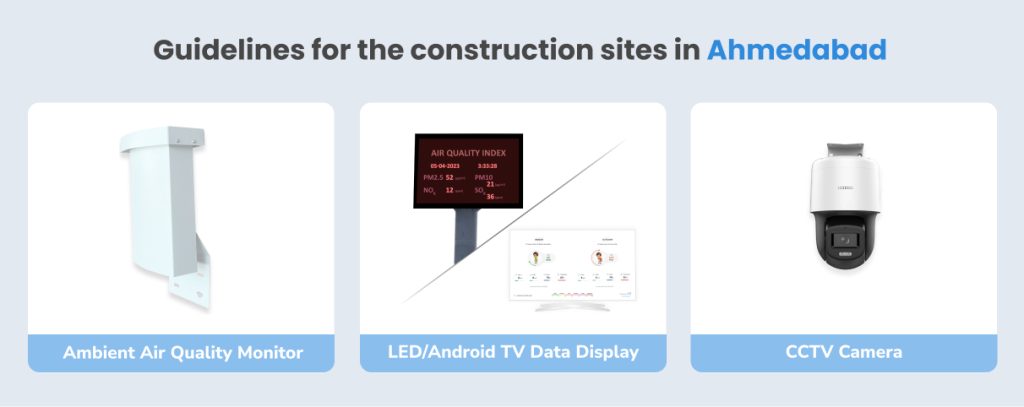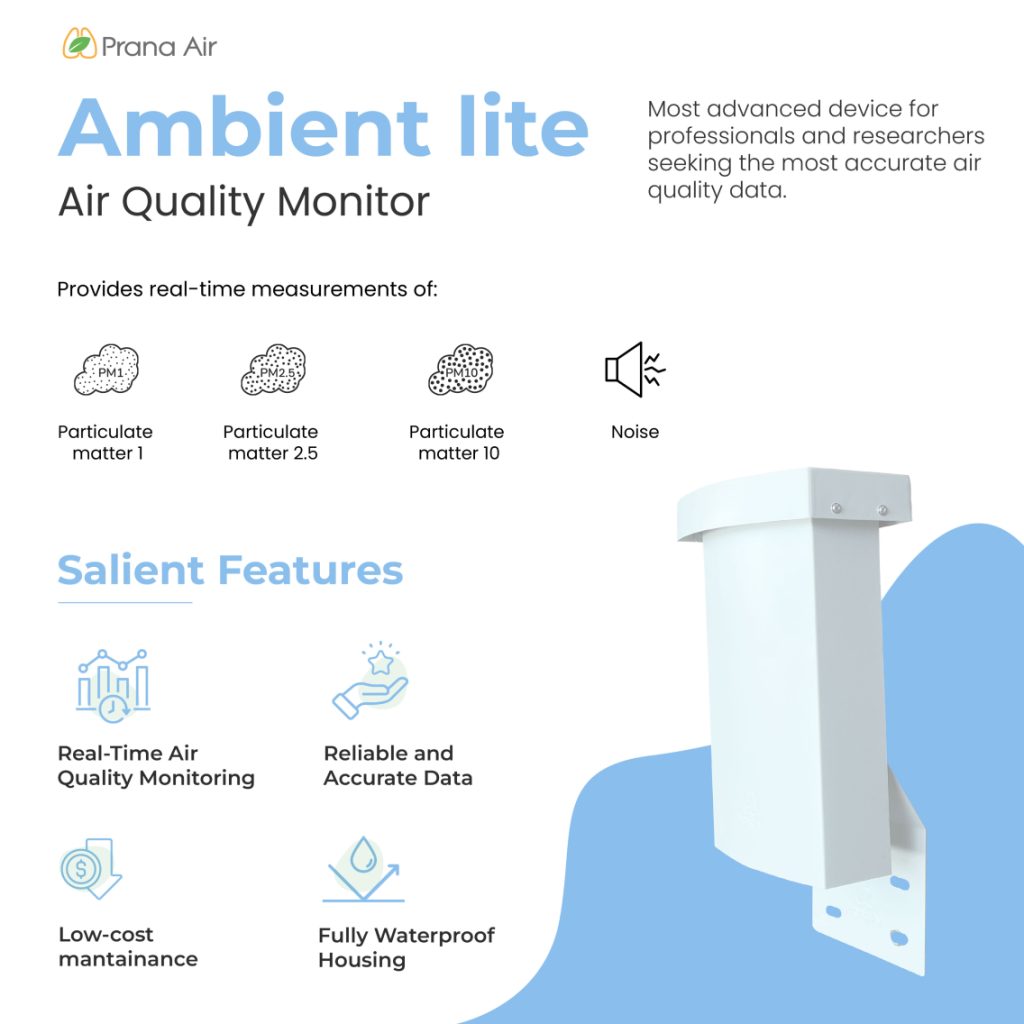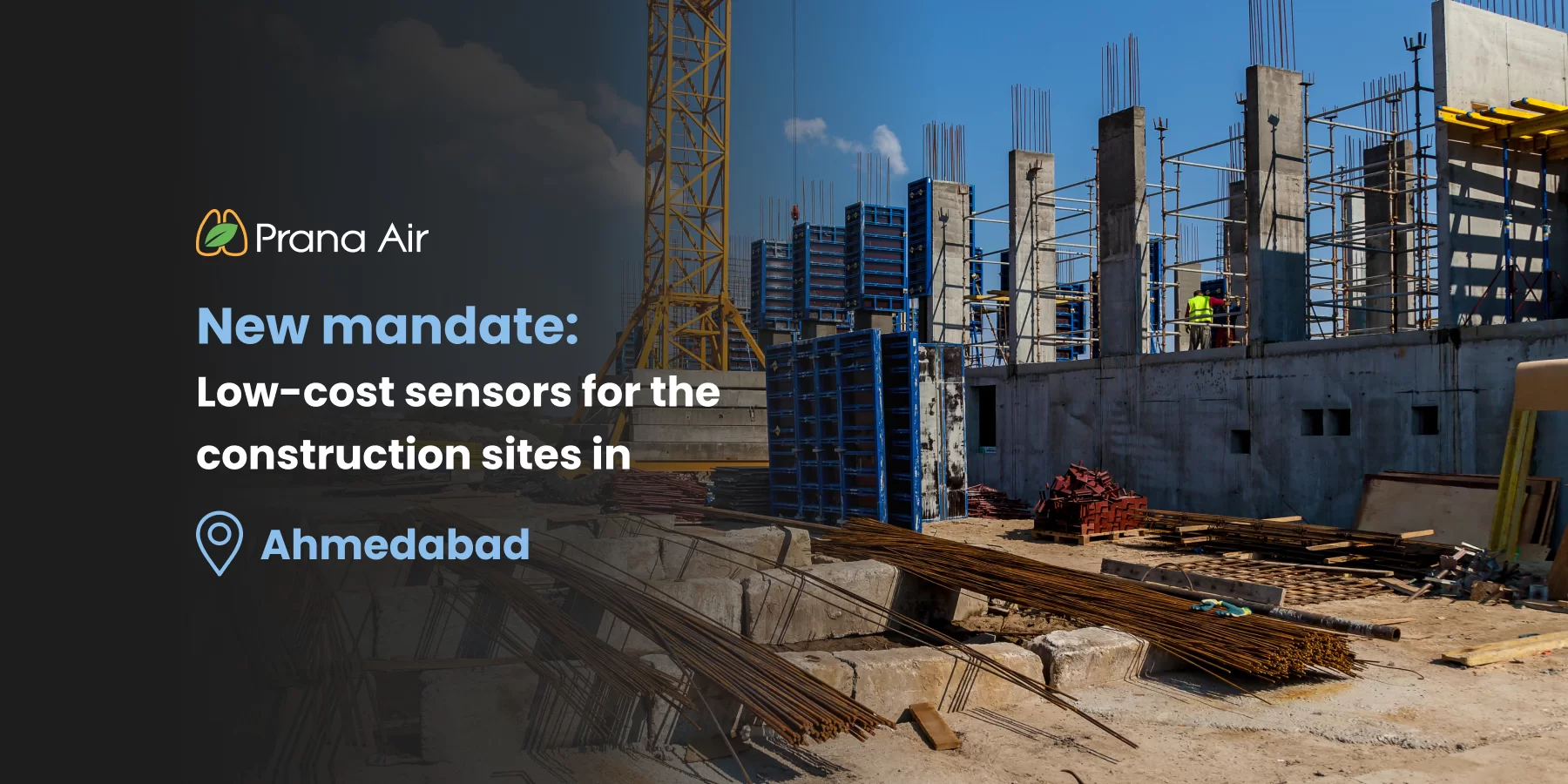Ahmedabad is one of the bustling metropolises in India. Urbanization is developing every day in the city. Hence, the related concerns are also increasing. Thus, to combat this, all construction sites in Ahmedabad mandate dust sensor installation. It also required CCTV cameras to showcase the real-time data. Let us know more about the latest mandate of low-cost sensors on construction sites in Ahmedabad.
Do you know about the latest mandate for construction sites in Ahmedabad? It is for the integration of low-cost sensors at construction sites in Ahmedabad. A report by the EPA (United States Environmental Protection Agency) depicts. Since, it shows that 10% to 30% of construction activities emit particulate matter. With it, another case study published in the International Journal of Emerging Technologies in Engineering Research (IJETER) on 6th June 2016. It has found that construction activities release heavy dust. Ultimately, it leads to many health issues including silicosis, lung cancer, and respiratory issues.
What are the recent guidelines for the construction sites in Ahmedabad?
Let us delve into the guidelines first that state the low-cost sensor installation. Because construction cities are the third top-most factor for air pollution in Ahmedabad. Since it releases 16% of particulate matter in the air. Moreover, Ahmedabad air quality levels are higher as per the recommended levels by NAAQs (National Ambient Air Quality Standards). It causes various public health risks and environmental issues.
As per IJETER’s study, construction dust is the main source of PM10 and PM2.5 particles. The WHO (World Health Organization) states that it is hazardous for workers and nearby residents. Many areas of Ahmedabad cover the construction sites. Because of it, residents have clogged over an estimated 40,000 complaints. Thus, the AMC (Ahmedabad Municipal Corporation) has drafted some laws for sites. It includes the installation of low-cost sensors and CCTV cameras in sites. Besides, sites are also required to showcase real-time data to the public by installing an LED display.

Authorities have enacted it to monitor air pollution levels. With it, it will also help in mitigating its impacts on the environment. Through it, authorities can identify the air quality standards of these sites to take necessary steps.
What are the benefits of installing low-cost sensors?
The initiative to integrate low-cost sensors on construction sites in Ahmedabad can help with air pollution issues. As it prioritizes air quality monitoring. Thus, pollution control measures can integrate to mitigate the emission. It is the best decision for city residents for a healthier environment. Here are the benefits of it:

Real-time monitoring:
It allows for air concentration detection at an early stage. Hence, it can control the air pollution spikes. With it, authorities can implement measures to control the pollution.

Better decision:
It provides accurate air quality data that can help in better strategies to implement. Pollution control boards can have evidence of emissions for each site.

Better for public health:
The primary aim of the mandate is to protect public health. Because emissions from construction sites greatly affect the health of children, pregnant women, and individuals with breathing problems.
What are the Low-cost sensors for construction sites in Ahmedabad?
Low-cost sensors are efficient devices to monitor various pollutants and parameters. It includes air quality, particulate matter, temperature, and humidity. Low-cost sensors are the seamless devices for better insight. Since it helps in providing a healthy environment to workers. With it, it also helps in controlling the emissions in the area. To manage air pollution challenges, the GPCB (Gujarat Pollution Control Board) and AMC have mandated the rule. The construction sites in Ahmedabad needed sensors with cameras.
Ambient Air Quality Monitor
For this, Prana Air’s Ambient Air Quality Monitoring Device is the best solution. Likewise, the monitor is packed with advanced sensors. It measures various parameters like PM10, PM2.5, and PM1, along with noise. The particulate matter measure range is 0-1000 µg/m³. With it, it works with light scattering technology.

Besides, the air quality monitoring device has high-tech features. It has advanced connectivity modes like Wi-Fi, GSM SIM, and RS 485. Moreover, it offers a data accessibility option on other devices. The device data can display on the phone, TV, or web dashboard. With it, cloud data storage can help in storing the data for comparison and actions.
Conclusion:
The new mandate of low-cost sensors for construction sites in Ahmedabad is a proactive approach. Because through it, they can address the air pollution challenges. Moreover, it helps in promoting public health and workers’ health at sites. The advanced technology power is the only way to combat urban air pollution. With it, cities can also achieve better urbanization by measuring their footsteps in the environment. The mandate can help in taking proactive actions and better solutions.







